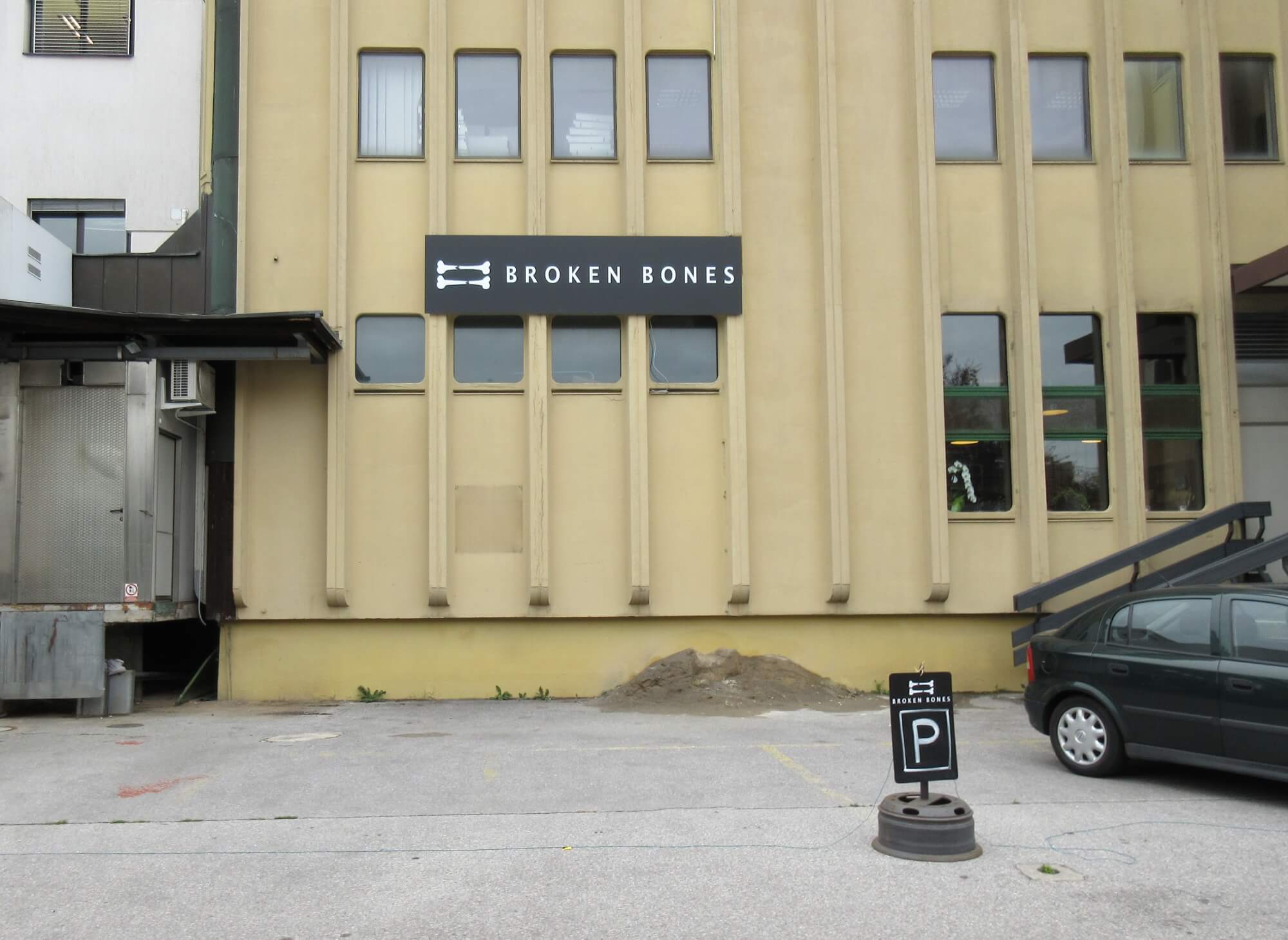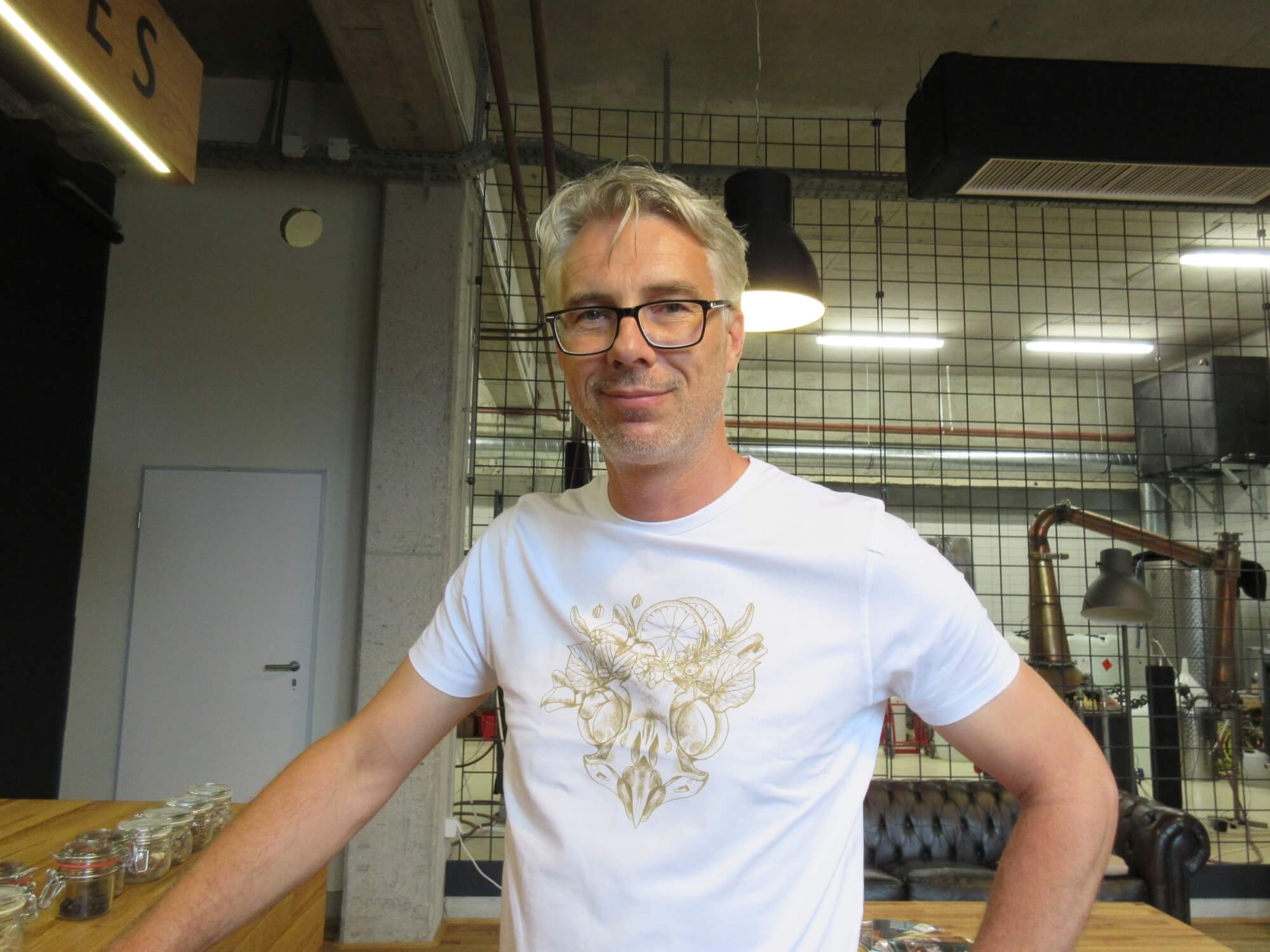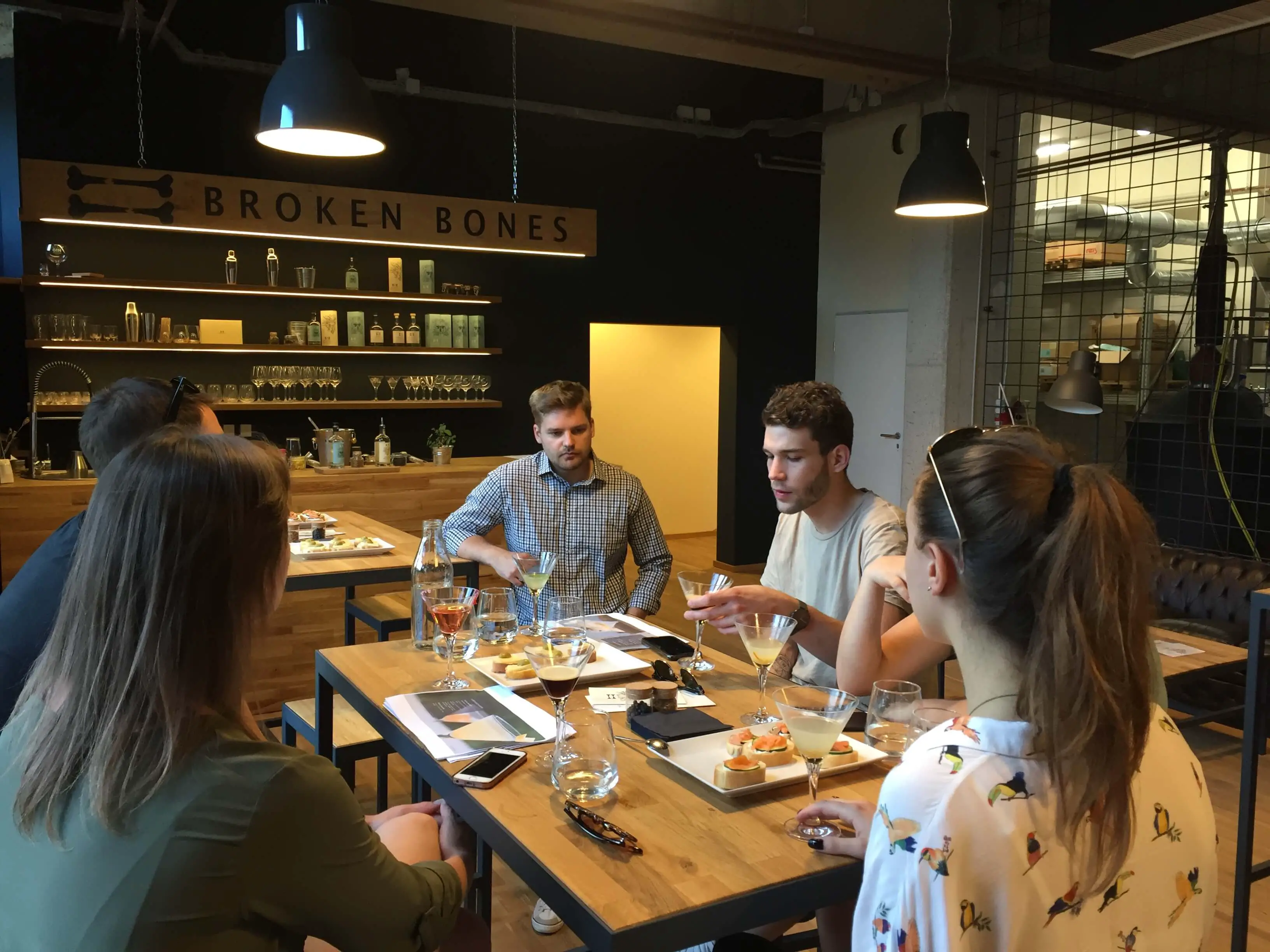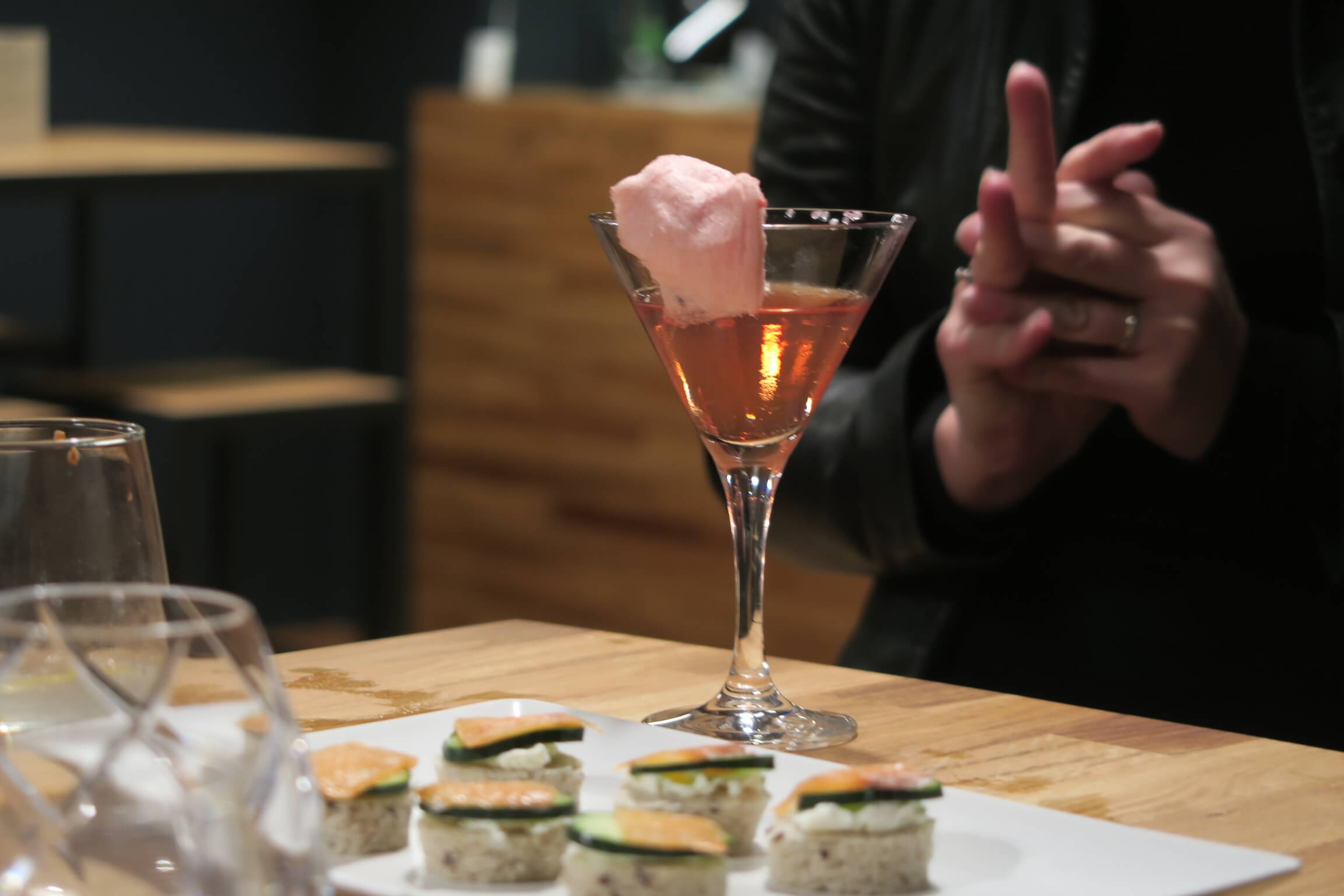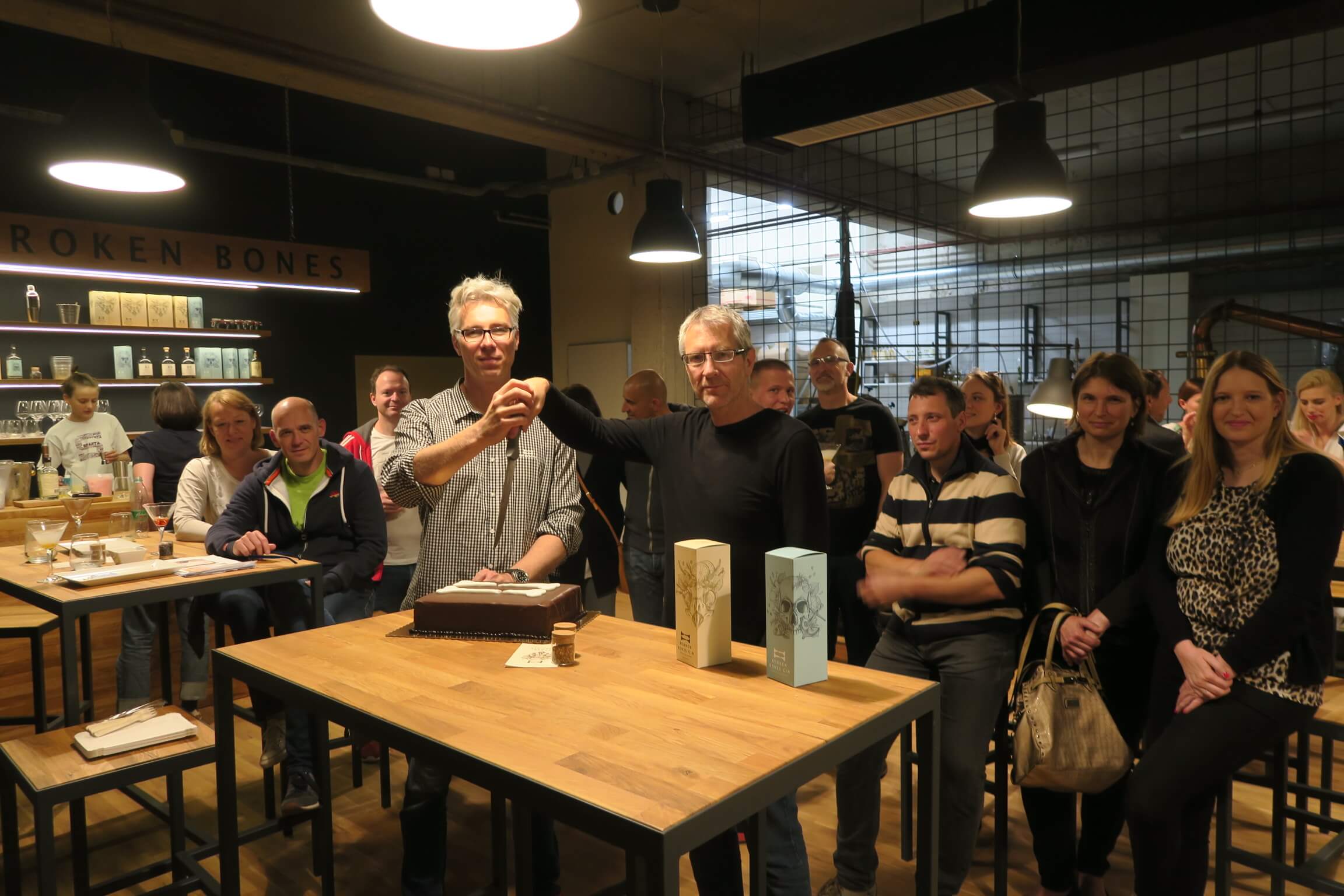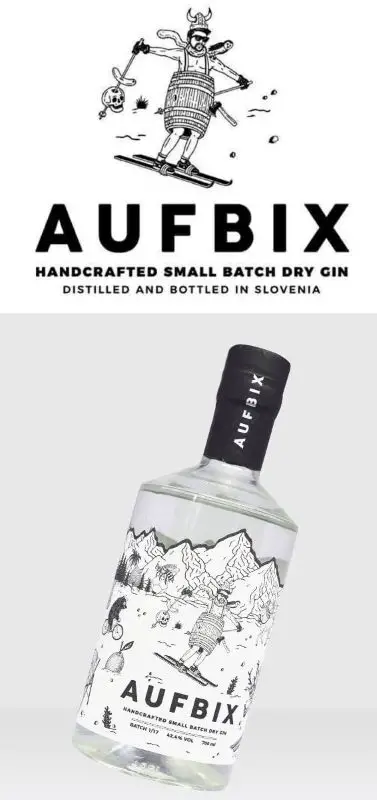Ljubljana related
STA, 15 January 2020 - Slovenia's road safety statistics for 2019 shows a 12% increase in the number of road traffic deaths - more than 100 persons lost their lives in road accidents last year, mostly due to drink driving, speeding and reckless driving. The Traffic Agency has highlighted the importance of raising awareness about responsible driving.
Almost 50 persons died as a result of speeding, followed by some 20 dying because of wrong-way driving, and twelve due to drivers forcing the right of way.
Drivers under influence caused more than 1,520 accidents, killing some 30 persons involved in them, a slight increase compared to the year before. Drink drivers were thus responsible for one out of three road fatalities in 2019.
Related: Interior Minister, Hospitality Industry Oppose Stricter DUI Rules
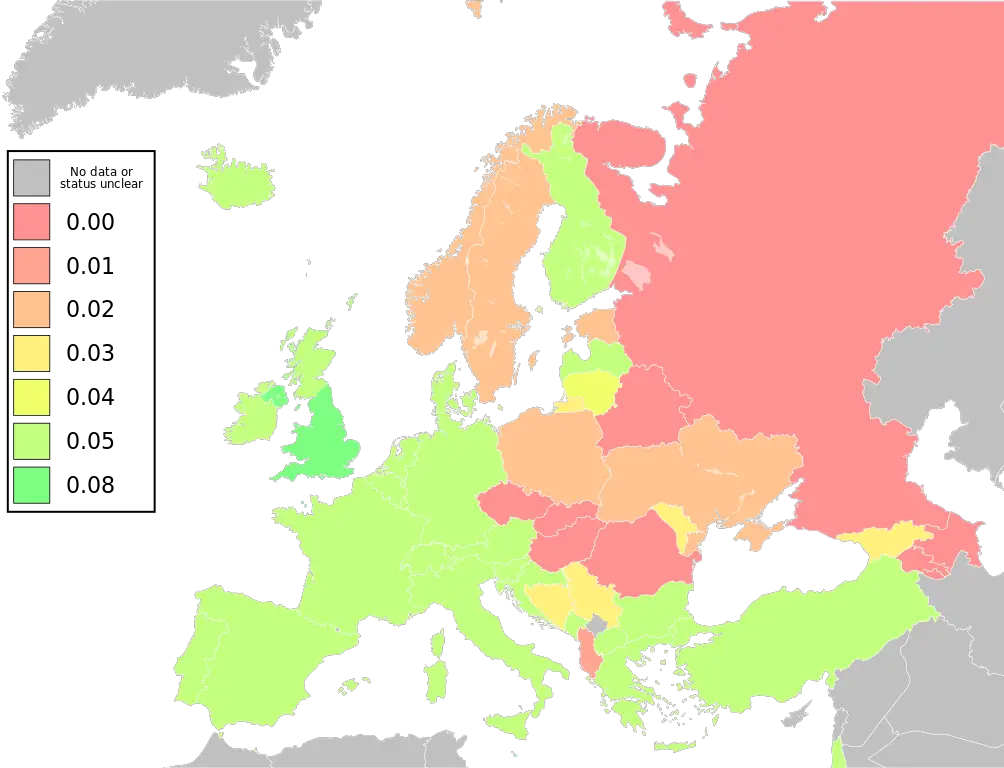
Source: Wikipedia
Almost half of total road accident victims were traffic participants from vulnerable groups - motor riders, pedestrians and cyclists.
Despite the larger number of road accidents, there were fewer seriously injured people though.
The agency's head Vesna Marinko said at today's press conference that last year's figures were not promising, but the situation was improving taking into account a longer timeline.
Related: Coffee, Cigarettes & Alcohol – Slovenia’s Place in the World
She warned about the dangers of drink driving and urged drivers to exercise caution and responsible driving.
Ivan Kapun, the head of the General Police Department's Traffic Police, said that alcohol abuse was ingrained in society, but the police had noted that most young drivers in cities found it unacceptable to be drunk behind the wheel.
Apart from driving under the influence, mobile phone use is another issue posing danger to road safety. The agency has thus launched a prevention campaign in cooperation with the police raising awareness about the dangers of using a phone while driving.
Related: Youth Say No to Cigarettes & Alcohol, Yes to Marijuana & Social Media
STA, 6 November 2019 - Tobacco and alcohol seem to be losing appeal among Slovenian youth, according to a survey presented at a round table debate in Otočec on Wednesday. However, the use of cannabis is on the rise along with social media and video games addictions.
The results of the 2018 international survey Health Behaviour in School-Aged Children show that smoking as a habit has become less common among teenagers, especially 13- and 15-year-olds, heard the debate hosted by the National Institute of Public Health (NIJZ).
The share of youth who were drunk at least twice in their lives also dropped in all age groups, NIJZ head Nina Pirnat said in presenting the results of the survey.
Meanwhile, the use of cannabis seems to be on the rise, as one in five 15-year-olds and almost half of 17-year-olds have tried it.
Another problem is internet additions, with one in ten young people addicted to social media and online videogames.
Martina Vuk, a state secretary at the Ministry of Education, Science and Sport, said a breakthrough should be made in these fields such as the one that led to a ban on smoking in closed public spaces.
She said this had been achieved only after a broad social debate on smoking, so she believes a general social consensus should be reached on what is acceptable and what is not.
"For as long as we are highlighting wine as food, we do not have a clear picture on what we want," Vuk stressed.
The head of the Public Health Directorate at the ministry, Mojca Gobec, agreed, adding that debates on this must not be confined to experts. "We must raise the debate to the national level," she said.
Vuk thinks progress in this field is being obstructed by strong lobbies on the one hand and weak politicians on the the other.
The participants agreed though that a lot can be done in terms of prevention in schools and with various programmes promoting a healthy lifestyle.
The debate was held as part of a national conference to mark the National Substance Abuse Prevention Month, which the NIJZ hosts in cooperation with the education, health and labour ministries.
All our stories on marijuana in Slovenia are here
STA, 25 September 2019 - The wine grapes harvesting season, which is in full swing, has a bitter side taste this year as well, as winegrowers and winemakers continue to struggle with sales in the face of large amounts of cheap imports.
The problematic situation was presented to the press on Wednesday by the Vinis Association of Slovenian Winegrowers' and Winemakers' Societies.
Its president Alojz Slavko Toplišek told the STA the growers had "truly found ourselves in a situation when we don't know what to do with the produce we invested our labour and money into through the whole year".
While the exact estimates of the amounts of grapes that could remain unpicked are not available yet, Toplišek said the key problem were excessive imports of cheap wine.
"We are at a major crossroads. We can either allow the market to completely quash us, or we can preserve our countryside," he warned.
He pointed out that the developments are already affecting the demographic situation at a number of farms where even small vineyards were an important source of income in the past.
Suffering the most are winegrowers with 3000 to 5000 square metre vineyards and without their own market, Toplišek said, while also noting the issue of local winemakers who already have established market routes being prohibited by law to buy grapes from smaller growers.
He feels the government should provide some protective measures for such cases, some "basic personal income", since those persisting with wine growing are for instance also preventing the overgrowing of rural zones.
Vinis in general has good relations with the Agriculture Ministry and has acknowledged the state's efforts in this field, with Toplišek pointing out that a ministry council for wine growing had held its maiden session today and also included a representative of the association.
Slovenian growers also struggled with sales seriously last year, which saw very high yields. Production increased by 42% compared to 2017, yields had however been poor in 2016 and 2017.
Slovenian winegrowers worked 15,630 hectares of vineyards in 2018, down from 15,839 the year before. In 1991 Slovenia still had over 20,000 hectares of active vineyards.
STA, 21 July 2019 - Six years after it was launched as one of the first craft breweries in Slovenia, Pivovarna Pelicon has grown into a fully-fledged company with six employees that is looking to crack the million euro revenue mark.
Posting net sales of EUR 584,000 for 2018, up over a quarter on the year before, the company expects annual revenue to rise by about 30% to roughly EUR 900,000 this year, co-founder Anita Lozar told the STA. Virtually the entire profit is reinvested.
The company sells its range of craft beers in Slovenia and Italy. This summer it has decided to enter the Croatian and Danish markets.
Starting off with a single product, a pale ale, Pelicon currently offers nine types of beer and has the capacity to produce up to 250,000 litres of the hoppy beverage a year. It has also branched out from beer to produce a craft gin and a "hoppy tonic" with real quinine.
"Over these six years we've grown, seen where our shortcomings are and slowly started to tackle them. We've slowly improved our product portfolio and started bottling beer. We currently sell half the beer bottled and half on tap in pubs, which we had not been doing before," Lozar said,
About a year ago the brewery also started to work with retailers. According to Lozar, this means having to increase output, which again required production adjustments. "But these are sweet problems," she said.
One of the many appealing things about life in Slovenia is the café scene, especially in the warmer months, with a vast number of places where you can sit outside, relax, enjoy a drink, chat with friends, read a book or watch the world go by. But how do Slovenes compare on a global scale when it comes to, say, having coffee, smoking cigarettes and drinking alcohol?
With regard to coffee, and based on Euromonitor figures for the amount consumed per capita in 2013 (based on the dry weight of coffee, rather than brewed volume), Slovenia comes 4th globally, with 6.1 kg of the caffeinated beans being turned into stimulating beverages for each citizen over a year. The list is topped by Finland (9.6 kg), Norway (7.2 kg), and the Netherlands (6.1 kg). Italy was in 18th place (3.4 kg), France in 21st place (3.2 kg), and the USA 22nd (3.1 kg).
Turning to tobacco, figures from 2016 indicate that Slovenia ranks 12th in the world for annual per capita consumption of cigarettes, at 2236.5 , or 6.1 a day. The list is topped by Andorra (6398.3 a year, 17.5 a day) and Luxembourg (6330.9 a year, 17.3 a day).
According to WHO data from 2010, Slovenia ranked 24th in the world for alcohol consumption, with the list topped by Belarus, Moldova, Lithuania, Russia and Romania, France coming 18th, Croatia 20th, the UK 25th and the USA 48th. However, note that a more recent WHO report, from 2018, found that Slovenia had the highest alcohol consumption in the region defined as the EU, Norway and Switzerland, with alcoholism seen as a serious problem in the country.
Related: Ljubljana Ranks High in European Consumption of Cocaine and MDMA, in Mid-Range for Amphetamines
The Slovenian gin scene is booming, helped along by the country’s long history of distillation and production of juniper-based schnapps (brinjevec or brinavec), as well as it’s growing reputation as a culinary destination.
One of the dozen or so gin producers that started business in recent years is Broken Bones, with a name that comes from when the owners, Borut and Boštjan, both had accidents when working with their first whisky barrels, resulting in a broken leg and broken nose.
I’d briefly met Boštjan at various gin-related events around town, but curious to know more about the first gin maker in Ljubljana, and the first new distillery in the capital in some 50 years, I decided to visit the place myself, an experience that’s now open to all.
It’s a short drive or cycle from the centre of town, at 132 Tršaska cesta, just between a Toyota showroom and a Petrol station. Since there are samples on offer you might prefer to get a bus, with both 6 and 6b taking you there from Slovenska cesta.
From the outside it’s easy to miss. Photo: JL Flanner
It's a small place, divided into a clean, white tiled distillery and a wood and leather showroom / store / bar. Playing the background is a sound collage of distillery sounds, put together by a DJ Boštjan knows from his time when he and the legendary Umek helped kickstart the techno scene in Slovenia, releasing records putting on club nights at Nexus and K4, two or three lifetimes ago.
Photo: JL Flanner
What’s your background?
Computer programming, a very different business. I worked in that for years on various projects. For example, I started the bolha.com, the online market, before eventually selling that, and then there was Napovednik. I was still working on that until recently, in fact, but Broken Bones (BB) was taking up more of my time, so now this is it.
How did you and Borut get into distilling?
It was a long process. I’m a technical guy, and my wife’s family has a vineyard, so I’ve been working with wine, thinking about wine for over 20 years. I also got into making beer, and was interested in whisky, starting from about eight years ago. But these were hobbies, not businesses.
At the same time my partner in Broken Bones, Borut, had been importing whisky in Slovenia since 1991, when the country became independent and that kind of business was possible. He also has a family history of distilling, so that was a hobby of his. He was making schnapps, and then he started making absinthe, one of the first producers in Slovenia.
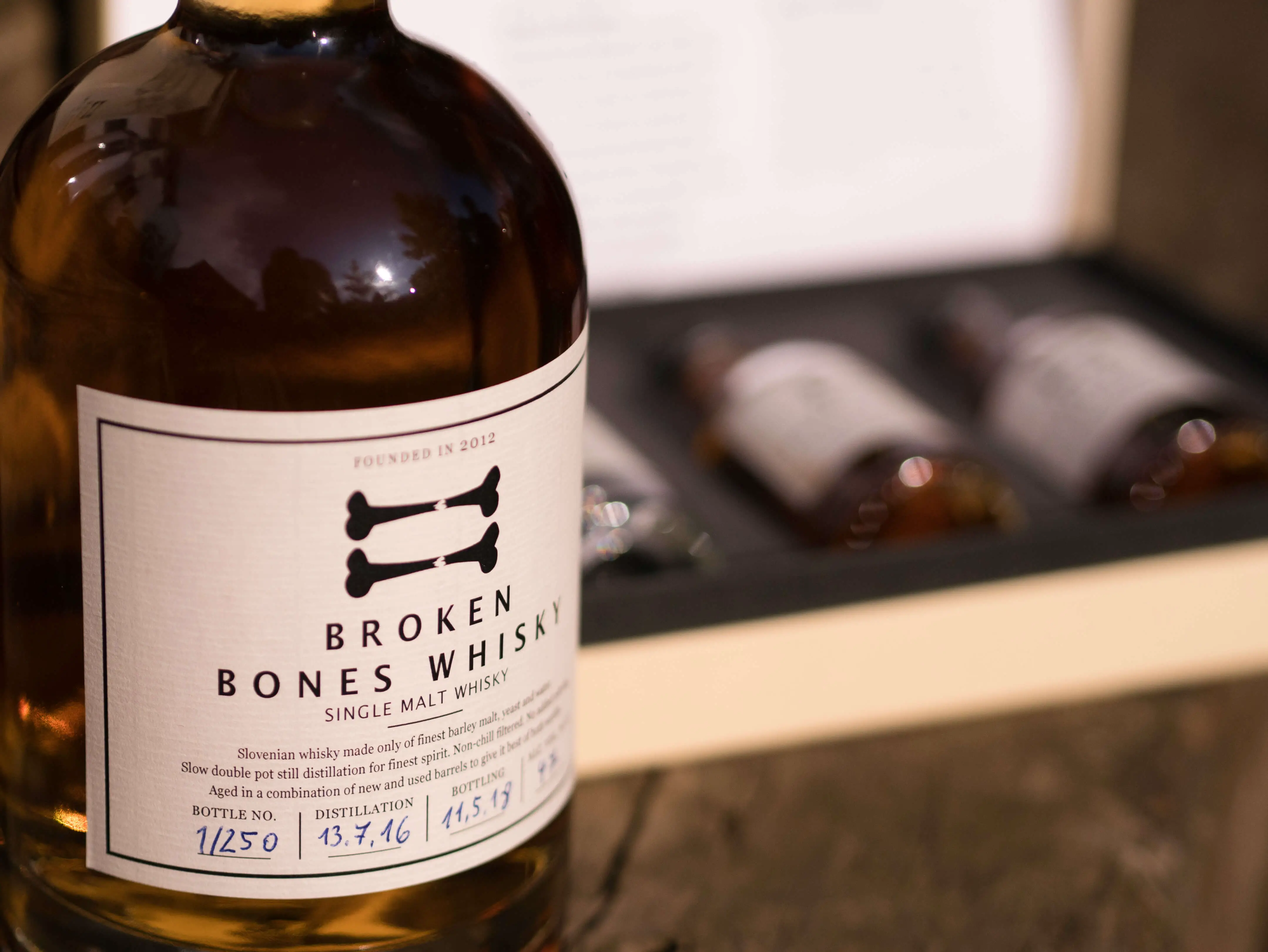
Broken Bones still makes small batches of whisky
So when we started working together it was in my basement in Kodeljevo, and we made our own still, for whisky, soldering the parts together ourselves, one that we still use here.
But whisky takes a long time, and it can be a very long time aging in barrels before you get a good whisky, because the raw whisky – the new make, the colourless liquid that comes out of the still, is really not something anybody would like to drink. Gin, on the other hand, is a lot faster to produce, with no real aging. It just needs to rest for a month or so and it’s ready to drink, so from a production point of view it’s a lot more appealing. We knew that many small whisky distillers were making gin precisely because of that, but not really liking classical gins we were not interested in making them. This changed a couple of years ago when we discovered the modern styles of gin by going to whisky events in London, where we learned about modern, much more interesting and aromatic gin, the kind from, say, Bombay Sapphire onwards, and that really started us thinking, especially because Slovenia is well known for its juniper berries.
We started experimenting with gin. Did about a hundred distillations on a small scale, studying a lot of the literature and using the knowledge we already gained through working with whisky. We experimented with botanicals, their ratios and different still designs. It took us about a year to get to the recipe we really liked.
The distillery is open for small groups, where you can sample the drinks along with some appropriate snacks
How long has Broken Bones been open?
Since May 2018, and we were very lucky when we launched. It was just when the gin craze was getting started here, with more producers, more bars and events.
I have to say that the craft beer scene really helped in this, too. Before then people were just drinking local lager, not thinking much about anything else but price. Then with craft beer things became more like wine. People were interested in what’s new, what’s next, and they also understood that you have to pay more for quality. So when people started making craft gin in Slovenia there was an understanding that this could be an interesting product, that it was worth exploring, and when you found something you really liked also that it was something worth paying for.
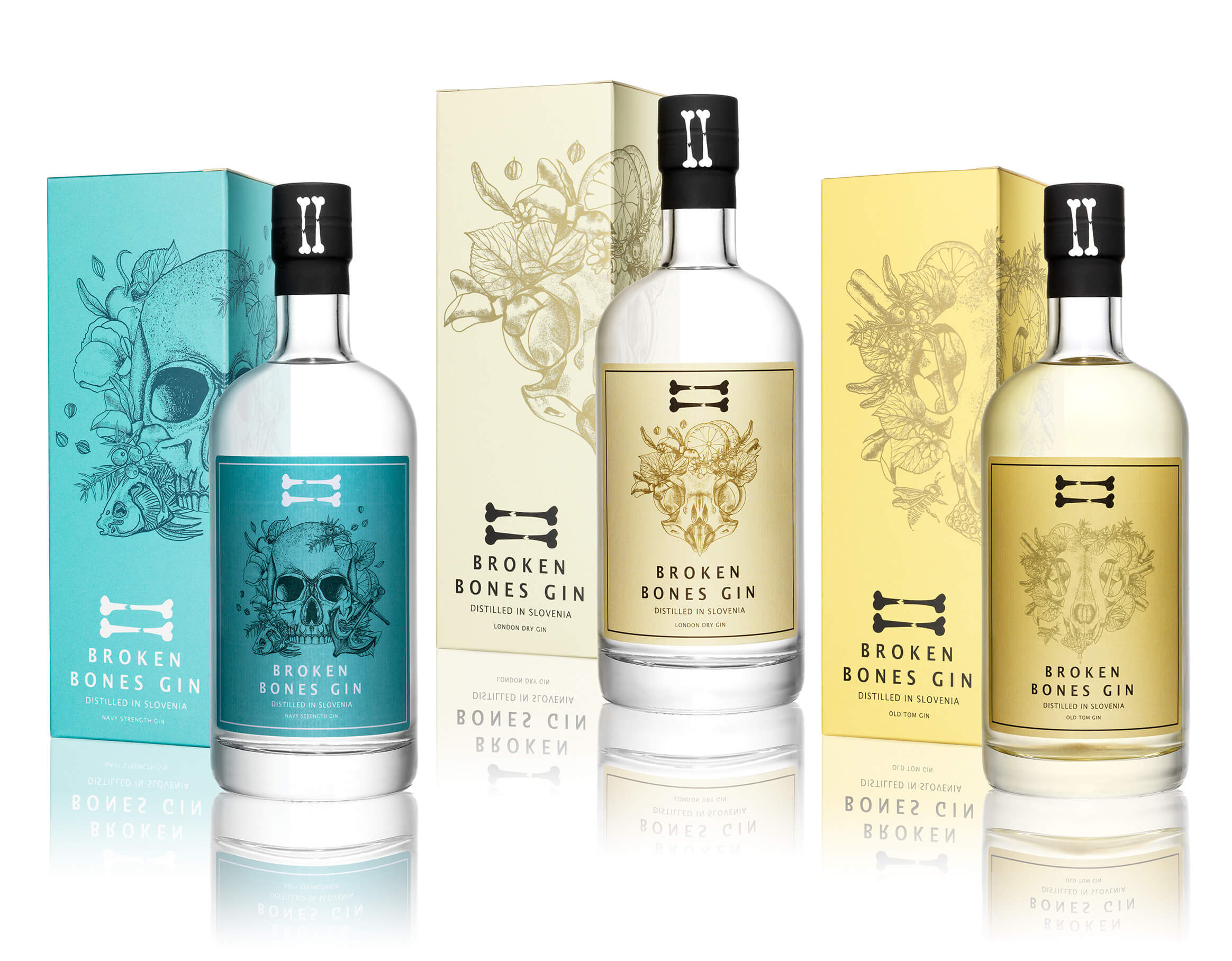
What’s the response been like?
Very good, both here and abroad. I’ve been going to London quite a lot, showing our gins to various bars, and we have a distributor in the UK now, as well as several awards. We currently have a 600 litre still, more than we need, but the way the business is growing it may be too small soon.
What ingredients do you use, and how are the London and Navy gins different?
We start off with a neutral alcohol, made of molasses, although grain is more common in the industry. For the botanicals we use the same in both our London Dry and Navy gins. Of course there’s juniper berries, but also lemon and cardamom, among other things, and then, as a Slovenian element, rosehip and linden. The Navy gin is stronger, with more alcohol, and that is why it can also carry more flavour it also has more botanicals.
We’re very busy at the moment, we only moved into this site at the start of May, but as things are settling down we should be able to launch something new soon, Old Tom Gin, with added linden tree flower honey and matured in Slovenian oak casks. Then we have a few more things we’re planning, including one that’s a more distinctive, Ljubljana gin, but that’s for another day.
And where can people find you?
You can find our gin at various bars and stores in Slovenia and the UK, but if you’re in Ljubljana then perhaps the best place is our distillery shop or the Central Market. Monday to Saturday, the part by the arcades that connects the two squares. Here you’ll find a stall where you can sample the gin. If you’d like a fuller measure, perhaps with a mixer, then the nearby Magda bar will do you. Elsewhere in town we’ve been working closely with Pritljičje and Kolribi, and if you’re looking for something a little different then Sveti Florijan, in the Old Town, makes a gin dessert.
People can also come here, for the Broken Bones Experience. We didn’t just want to do a classical tour of the distillery as such, although you obviously see it as well. But if you make a visit then you’ll learn about the history of gin, the process of distillation, the different kinds of gin, and, of most importantly, you’ll get to sample some, including in several cocktails from the selection of recipes created by Tina Pirnat especially for our gin accompanied with snacks, and try our gin pralines.
You can see the cocktail recipes here, with the one I tried below, while you can learn more about the Broken Bones Experience here.
The Martini Espresso with a Gin Twist
Ingredients:
- Broken Bones Gin - 30 ml
- Kahlua - 30 ml
- Espresso coffee - 30 ml
- Simple syrup - half a teaspoon
Preparation
- Shake and strain
With its long history of growing juniper berries (brina) and distilling a juniper-based schnapps (brinjevec or brinavec), Slovenia has the culture and skills needed to produce high quality gin. However, it’s only in recent years that commercial production of the spirit seems to have gained traction, with at least 14 distillers now having versions of the classic drink on the market.
We thus present part two of our series on Slovenian gin, to help you choose the next bottle or glass to enjoy.
Aufbix is a small-batch London-style gin flavoured with juniper berries, coriander, cardamom, carob, angelica and orris root, with additional citrus notes given to the spirit with the use of fresh peel from pink grapefruits and blood oranges from Sicily. And that Italian note isn’t the only international ingredient in the Aufbix story, as one of the founders of 78 Stopinj, the distillery that uses water from Mount Pohorje to produce it’s drinks, is from New Zealand, with a background in winemaking. Website.
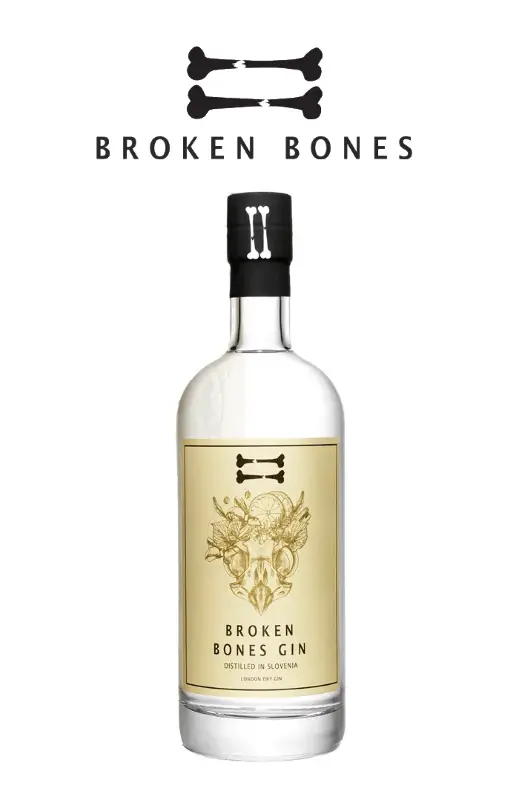
Broken Bones is made in Ljubljana from a distillery that started with whisky before moving on to gin, with the aim of producing a spirit that could be enjoyed neat as well as in a cocktail. The unique flavour of the drink is given by the use of rosehip berries and linden tree flowers, with the latter an especially Slovenian touch, given that this is one of the symbols of the nation. The name comes from when the owners, Borut and Boštjan, both had accidents when working with their first whisky barrels, resulting in a broken leg and broken nose. The gin is made in small batches, with each batch being slightly different. In addition to the standard gin, the company also produces Broken Bones Navy Strength Gin (57% ABV), and is working on Broken Bones Old Tom Gin, with added honey and matured in Slovenian oak casks. Website.
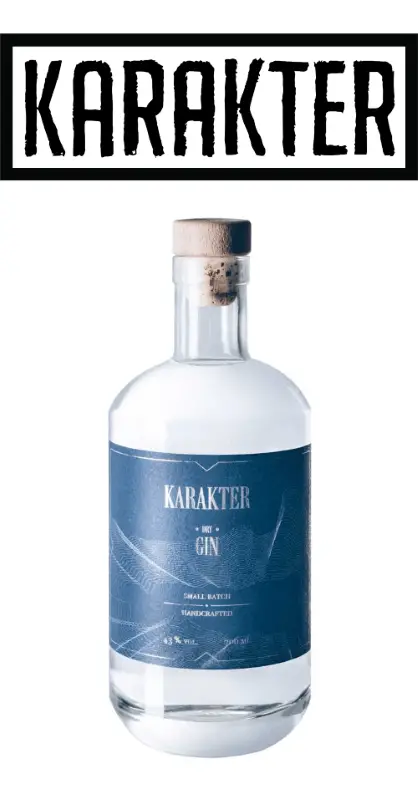
Karakter Gin is distilled by a team who were draw to the spirit for two reasons: first for the relative simplicity of it’s production, and second because gin is a drink that allows for a wide range of experimentation. The result is thus a gin that has character, hence the name, and one that seeks to explore the basic idea of gin by brining out the complexity of the usual juniper berries and botanicals by adding various atypital herbs and spices. If that sounds intriguing then seek out a bottle or glass of Karakter Dry Gin, produced using maceration, infusion, and percolation. Website.
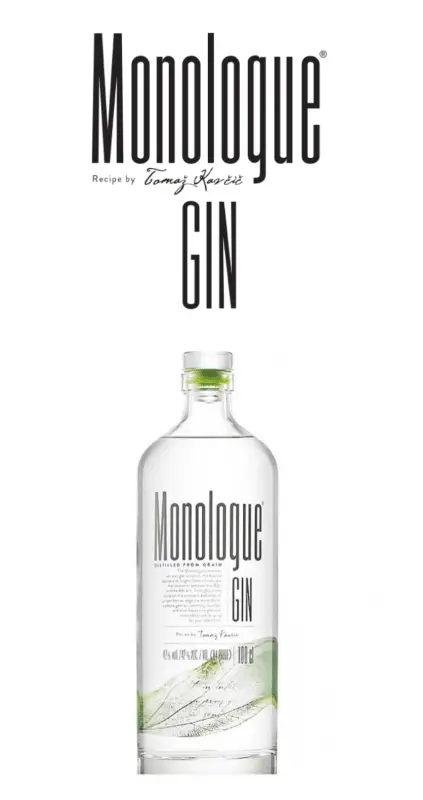
Monologue Gin is the first “celebrity” gin in this series, presented by Tomaž Kavčič, the top chef of the famed Pri Lojzetu. The twist on this gin is that Kavčič has aimed to capture the taste of Vipava in the spirit, which in addioion to the usual herbs and botanicals is flavoured with rosemary, lavender and an extract of olive leaves. No website at present, but the restaurant can be found here.
Other articles in this series can be found here
STA, 11 May 2019 - Following a push from the Traffic Safety Agency and a number of NGOs to lower the permitted alcohol level for drivers, Interior Minister Boštjan Poklukar expressed his disagreement with this proposal on Friday. He believes that the existing rules are good and that Slovenia should address alcohol-related issues as a broad social problem.
The minister was asked about his position on the proposal at the sidelines of a business conference in Portorož last night organised by the Chamber of Craft and Small Business (OZS), which has previously expressed opposition to the proposal.
The OZS believes that the initiative would damage the country's tourism industry and worsen the situation of hospitality businesses, already aggravated by several restrictive acts, including the new ban on trans fats and the tobacco act.
Related: Slovenia Launches Project to Reduce Drinking, Consumption Highest in EU
The alcohol limit for drivers in Slovenia is 0.05% of alcohol per litre of exhaled air, while the agency wants it to be reduced to 0.02%.
The proposal has been backed by a number of NGOs, many of which see it as the first step to gradually lowering it to 0.00%.
"Problems related to alcohol are not only limited to the roads. This is a general social problem that requires serious conversation. But I believe that current legislation is not bad," said Poklukar.
"Let's think whether this change is really necessary. I'm for 0.05%," he added, according to a press release released by his ministry today.
He also said that for the first time ever the number of road casualties dropped to below 100 last year.
If you enjoy gin then what better way to turn your habit into a hobby than to explore the world beyond the big names, and if you’d like a good excuse to restock your liquor shelf with intriguing bottles and varied tastes then consider entering the world of Slovenian gin
To the ill-informed this might seem like a risky proposal – what would Slovenians know about gin? But this would be a mistake akin to dismissing Japanese whisky or Californian wine. More so, perhaps, as Slovenia not only has the climate and knowledge needed to produce the drink, but a long history of working with juniper berries, producing a native spirit known as brinjevec (sometimes brinavec).
Brina is the Slovenian name for the berry that gives gin, along with various other botanicals – each producer using their own selection – its distinctive taste, and here we’ll note that botanicals, distillation and restorative liqueurs are also all part of the country’s cultural heritage. And gin, if not quite in the DNA, is certainly in the bloodstream of a growing number of Slovenians.
We thus present part one of a brief guide to of the bigger names in domestic gin production, the ones you might find in good liquor stores and bars across the country, and soon, perhaps, abroad.
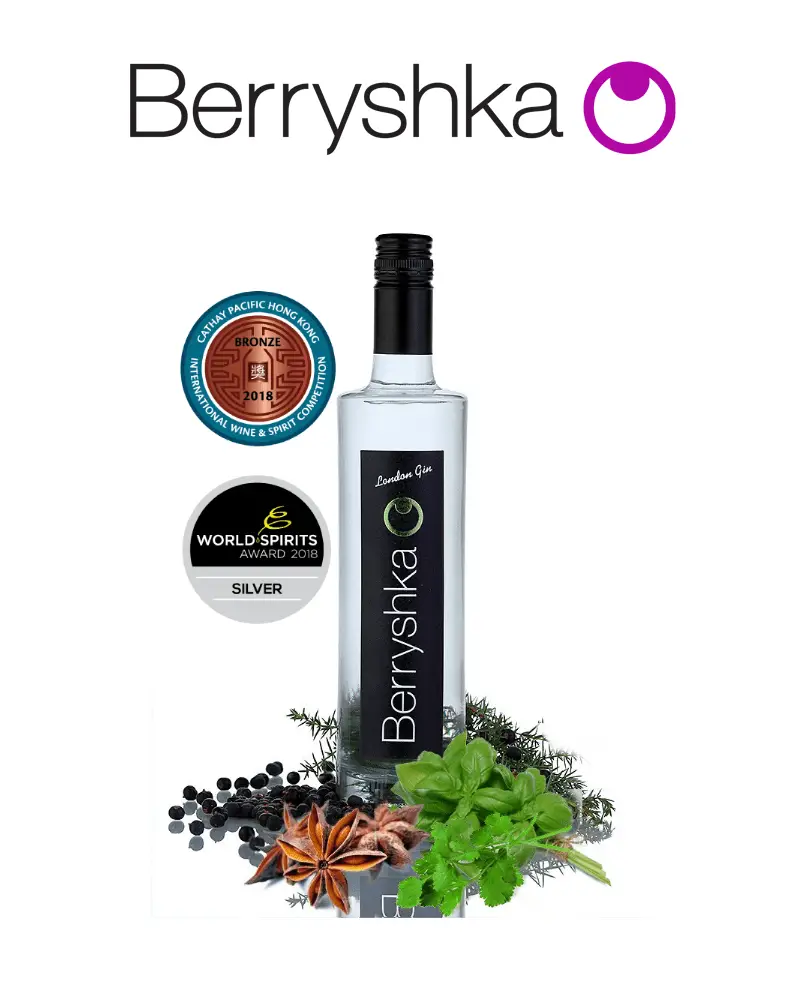
Berryshka, based in Dolenjske Toplice, is family firm that started in 1950 producing essential oils. While this remains the core business, the company has long applied its expertise in extraction and distillation to other products, including a range of spirits and fruit liqueurs, with drinks that are low in sugar, come with no artificial colours or additives, and are made using natural spring water. These liqueurs are based on natural flavours such as cherry, aronia, walnut, blackcurrant, blackberry, blueberry, and juniper – the berry that gives gin its distinctive taste. Berryshka juniper products currently include a brinjevec – marketed as brandy and sold in both original and oak-barrel aged varieties – and two gins. London Gin Berryshka follows the traditions of the most popular gin, with a neutral alcohol flavoured with juniper berries, angelica, iris, cinnamon, liquorice, cardamom, anise, cumin, lemon, and coriander, while the while the more distinctive BrinGin Berryshka has the alcohol provided by juniper distillate, producing a drink that can be savoured neat, or enjoyed with the usual mixers. You can find Berryshka’s liquers and chocolates in many stores, but for the full experience you’re welcome to visit the factory, which also produces handmade chocolates, an experience that could easily be combined with a trip to Novo mesto, or the nearby hot springs. Find out more the company’s website.
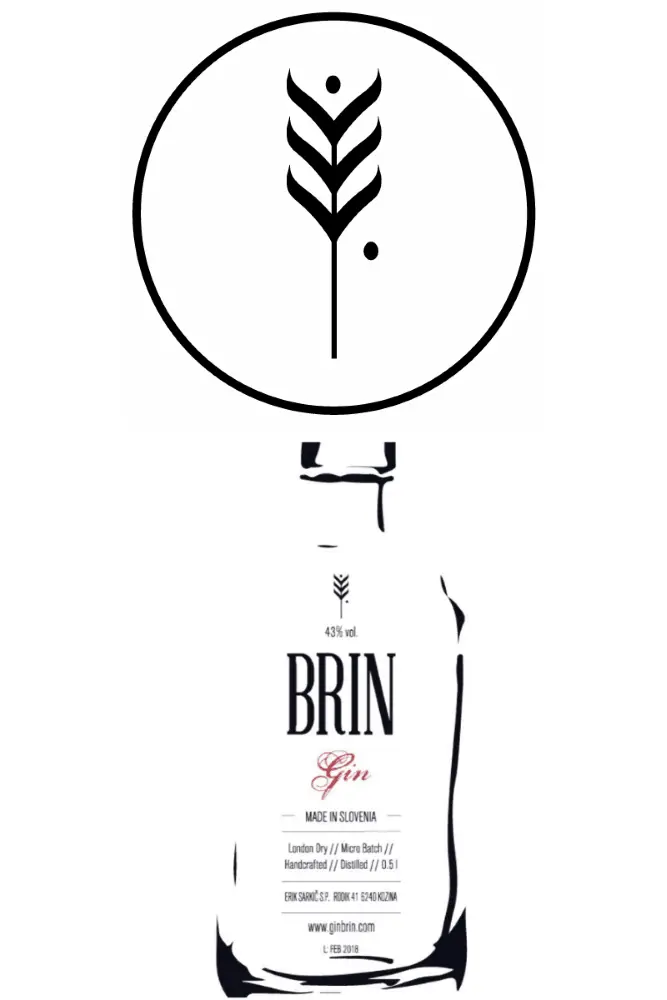
Brin Gin is the work of Erik Sarkič, a third-generation brinjevec producer who grew up with a deep background in junipers and distillation. The move to gin was thus natural one, opening up new markets for the family business, and arguably making better use of the berries, since a litre of brinjevec requires around 8 kg of them, while the same amount of gin gains it’s more subtle flavour from just 20 g. In his mission to dive deeper into the flavour profile of the juniper Berry Erik is supported by Matevž Kmet, a biochemist who works as a consultant for the firm and has the air of a mad scientist, or at least a man for whom the greater the challenge, the more exciting it is to consider. Together Erik and Matevž dream up new products and then work to make their dreams become reality. One of these, still in the experimental stage, includes an alcohol-free gin, for those who love the taste of a good G&T but want to maintain a clear head. Another is what’s intended to be the world’s best, and most expensive, gin – with production of this now completed, and the launch only waiting on the perfect bottle to be found. Finally, Erik and Matevž are also working on a product that will be made entirely of juniper, including a juniper wood bottle. You can keep up with the latest developments, and order a bottle online, here.
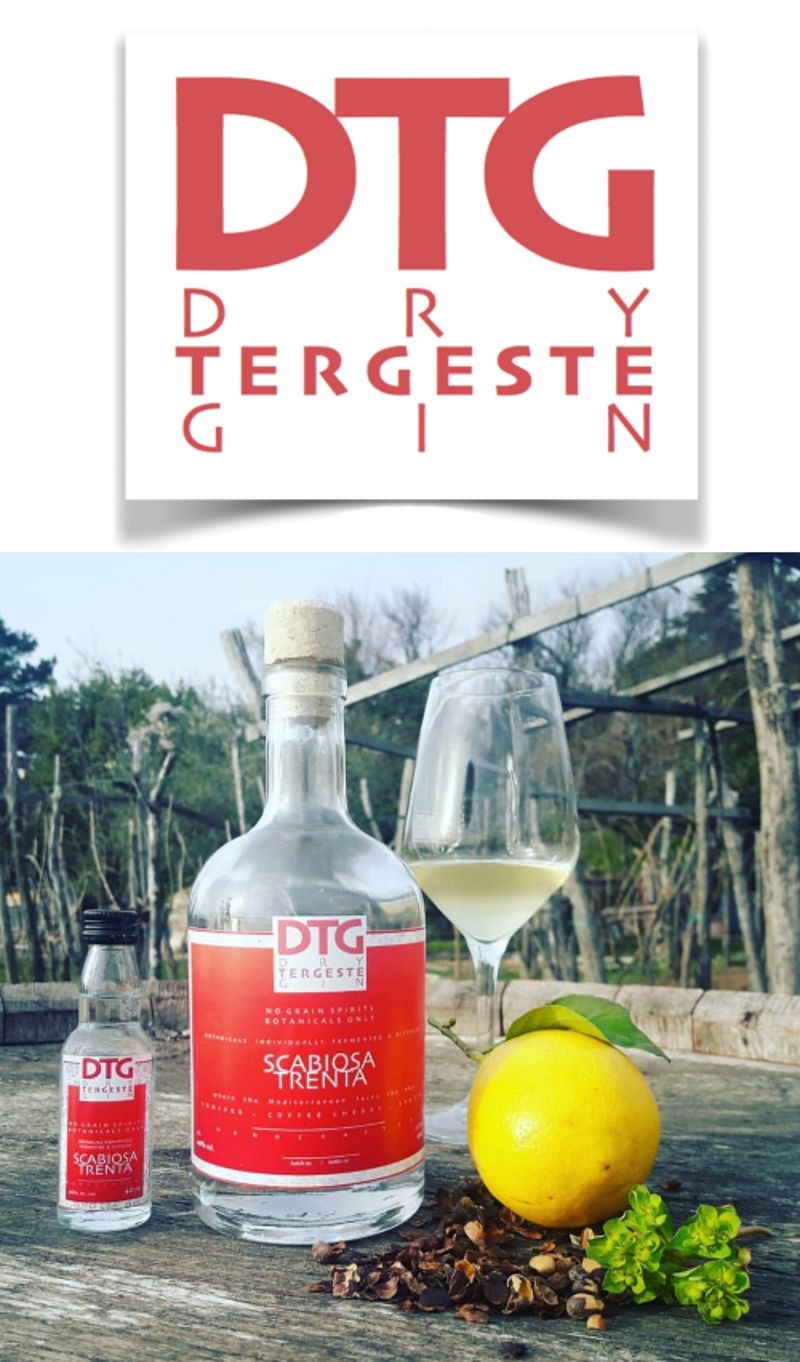
DTG (Dry Tergeste Gin) also takes its own approach to the classic spirit, and is yet another small producer showing that the Slovenian tradition of brinjevec means the country is well positioned to become home to a variety of boutique gin brands, all of which are worthy of a place on your shelf. The name refers to Tergeste, or Trst (or, you must, Trieste), and Martin Žužek Kres, an anthropologist by training who developed the drink, wants his products to reflect the history of the land. However, DTG doesn’t just have a story to tell, but also a product that distinguishes itself from other gins in a number of ways. For one, it avoids the use of grain alcohol to give the drink its kick, and instead relies on alcohol produced from the juniper berry, mixed with a unique coffee cherry brandy. Coffee cherries are the fruit that grow around and protect coffee beans, and contain both caffeine and antioxidants. Their use in gin doesn’t produce a coffee-flavoured drink, but does give an interesting taste that can be enjoyed neat, without ice, or with mixers. In a sign of how quickly the Slovenian gin scene is set to evolve, the company has three new products that are still in development, but which I was lucky enough to taste at a recent event, and these will add to the flagship drink’s flavour profile with the use of spruce, thyme, and wild mint. Look out for DTG in stores, or order a bottle online.
All the parts of this series can be found here
STA, 11 March 2019 - Several cases of drunk driving by members of the Slovenian police force as well as one by a state prosecutor have been making headlines in recent weeks. While such cases are set to be on the decline, they have now grabbed public attention for including very senior members.
The first prominent case reverberated in early February, as Maribor Criminal Police head Robert Munda was caught driving off duty with 0.51 of milligrams of alcohol per litre of breath, more than double the 0.24 mg/L legal limit.
This was preceded by a case at the end of January when a member of the criminal police crashed into a traffic light in Ljubljana, also during his free time but allegedly with an alcohol level of 0.97 mg/L.
Related: Drink driving still a problem in Slovenia (feature)
Even more excessive, allegedly involving four-times the legal limit, was the case of a drunk driving district state prosecutor, unofficially Anica Šoštarič from Murska Sobota, who was caught at the end of February.
Meanwhile, the most recent case of a senior representative of the hand of justice driving under the influence was reported today and unofficially includes the head of the Operation and Communication Centre at the Kranj Police Administration Jože Pasar.
Related: Slovenes still drink too much, “40 days dry” launched for Lent
According to POP TV, Pasar was involved in an accident on 16 February while speeding and drunk driving with an alcohol level of 0.62 mg/L. He has been issued a pre-termination warning notice.
Disciplinary proceedings are said to have also been introduced in the remaining cases, but no dismissals have been reported.
Meanwhile, Police Commissioner Tatjana Bobnar has told the newspaper Večer that the police force has 8,152 employees and that these are not immune to inappropriate behaviour.
Related: Food, alcohol, sex, marriage, divorce and death – recent statistics on Slovenia
She stressed that "unlike some other institutions, we have mechanisms in place to discover this and penalise, tackle it ... there are no taboo topics with regard to this in the police".
Bobnar added that such cases have been on the decline and that the recent weeks have created a distorted impression.
"For instance: the police discovered 13,000 people driving under the influence last year. There were nine police officers among them ... The year before, the figure was ten and in 2016 it was 20," she said.
All our lifestyle stories are here


